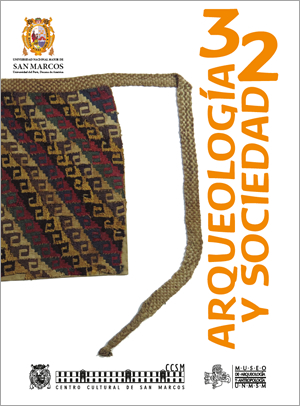CANTERAS, CUEVAS, ACUEDUCTOS Y CAMINOS CONECTADOS A LA METRÓPOLI WARI
DOI:
https://doi.org/10.15381/arqueolsoc.2016n32.e13336Keywords:
Wari, caves, aqueducts, roadsAbstract
The primary objective of the present research is a description which means in the terms of landscape archeology is done in the direct recognition, complemented with the mapping used in archaeological exploration and sources and sources, arriving at a recorder for the moment 34 archaeological structures Among quarries, caves, aqueducts and roads connected to the Wari metropolis, the indicators that serve to have a main approach and the understanding of the management of the territory in the imperial capital, operation and relation with the peripheral settlements, way of life of The inhabitants, Craft, ceremonial, including the construction of the enigmatic city of stone and the ideology expressed in the cult of the caves, hills, springs and lagoons where the Wamanis or spirits of the Andean cosmovision dwell.Downloads
Published
Issue
Section
License
Copyright (c) 2017 Ismael Pérez Calderon

This work is licensed under a Creative Commons Attribution-NonCommercial-ShareAlike 4.0 International License.
THE AUTHORS RETAIN THEIR RIGHTS:
a. The authors retain their trademark and patent rights, and also on any process or procedure described in the article.
b. The authors retain the right to share, copy, distribute, perform and publicly communicate the article published in the Arqueología y Sociedad (for example, place it in an institutional repository or publish it in a book), with an acknowledgment of its initial publication in the Arqueología y Sociedad.
c. The authors retain the right to make a subsequent publication of their work, to use the article or any part of it (for example: a compilation of their works, notes for conferences, thesis, or for a book), provided that they indicate the source. of publication (authors of the work, journal, volume, number and date).






